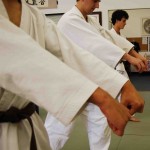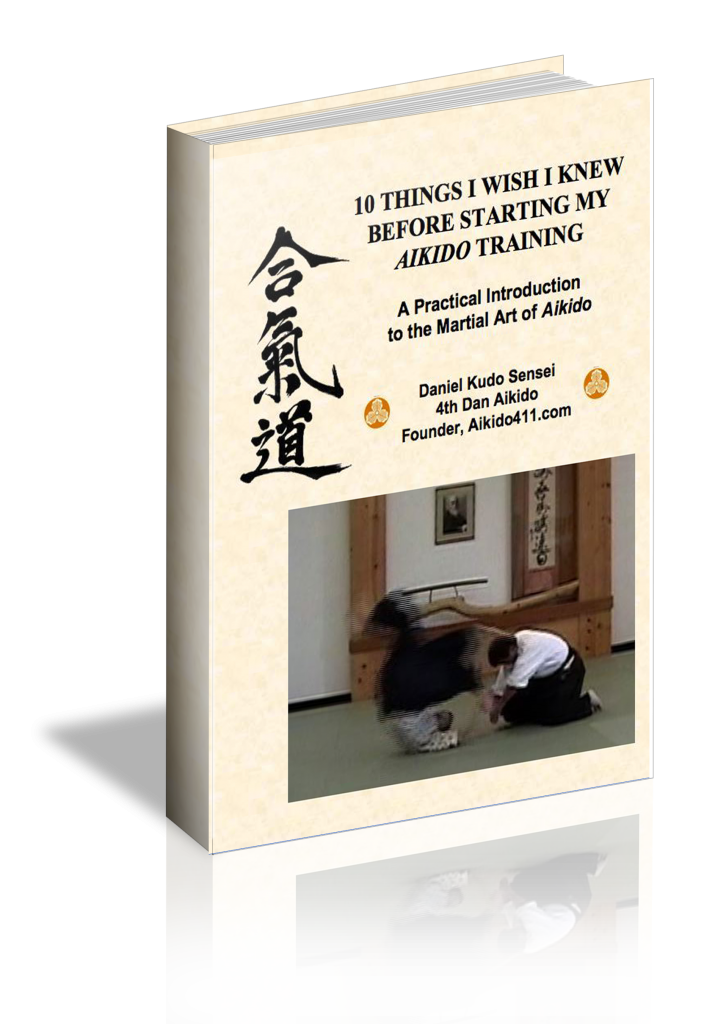Aikitaiso: Exercises of Aikido Techniques – Why We Do Them

Aikido Techniques: Ki extension
Golfers of all levels, even the Pros, spend hours at the driving range. They do this because a good swing or putt does not just happen. Getting good at anything requires repetitive execution of the movements required to execute a successful swing. Many mentors in Aikido refer to the fact that the mind and body are unified to create a technique that “just happens” in a manner that is both accurate and consistent. This article is the first in the series that addresses the fundamental principles of the Aikitaiso (pronounced ayee-key-taee-so) exercises:
Why do the Aikitaiso exercises in our Aikido Techniques training?
Practicing techniques is central to getting good at virtually everything we do in life, from running, to baseball, to doing well in school. In business a common saying is that “it is better to do it right the first time, than to do it over again”. This concept certainly applies to the execution of Aikido techniques. Just as techniques have names, each Aikitaiso element has a descriptor which describes the movement and is similar to the name of its related technique.
Fune kogi undo can be loosley translated as “rowing exercise” and is executed by shifting the hips forward followed by the arms driving forward and is very important as an Aikido fundamental. This is because correctly executed Aikido techniques ALWAYS begin from the center and is followed by the arms. Most new students believe, incorrectly, that arms lead the movement. Most larger individuals can “get away with it” because their upper body strength can compensate. For smaller, weaker students, there is no advantage to attempting to muscle the technique because they can not overcome their partner’s strength. This exercise, done properly, makes use of the body (center) to initiate the movement of your partner because it is more difficult to “resist” the momentum created by the whole body. The arm movement is similar to a “follow through” in golf because movement has already been initiated by the body. Well executed Aikido techniques rely on movement from the one-point or center for power and appear to be effortless as a result. In the rare archival video footage, Master Koichi Tohei demontrates many of these Aikitaiso exercises:
Aikido Techniques: Follow the Four Basic Principles
Proper execution of the exercises as well as the techniques relies on the use of the four basic principles of Aikido: Keep One-Point, Relax Completely, Weight Underside and Extend Ki. If the student’s arms are relaxed but powerful, then they become a solid, unmovable part of the body which can move the partner when the center moves.
A seasoned runner would never dream of starting a run without first stretching, because this activity clearly reduces the potential for injury. Many Aikido techniques are joint locks which stretch tendons and ligaments causing a discomfort, which permits the defender to gain control of the center and lead ther attacker to a controlling pin. Many of the Aikitaiso exercises perform the same activity for the same reason. Ikkyo, nikkyo, sankyo and kotegaeshi undo are designed to stretch the tendons and ligaments in an effort to minimize the chance of injury when the techniques are applied.
In conclusion, the reason we do the Aikitaiso exercises is to help us to learn how to correctly move our bodies in the execution on a specific component of an Aikido technique. We do them so that we can continue to internalize the Four Basic Principles of Aikido. Finally, we do them to stretch the tendons and ligaments of our joints to minimize the potential for injury as we practice.
Dan Kudo Sensei trains and teaches in Santa Ana, California, located in Orange County, and holds the rank of Yondan (fourth degree black belt). Click here to view a demonstration of the Aikido tehcnique of kotegaeshi.

Leave a Reply